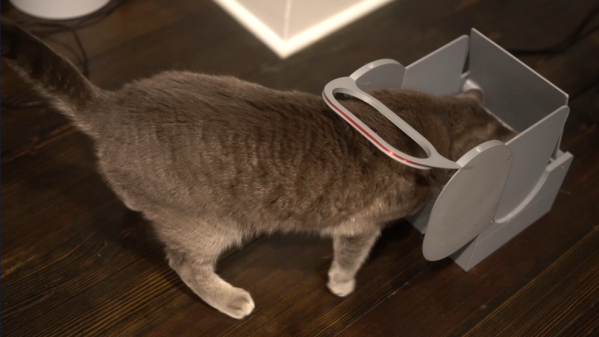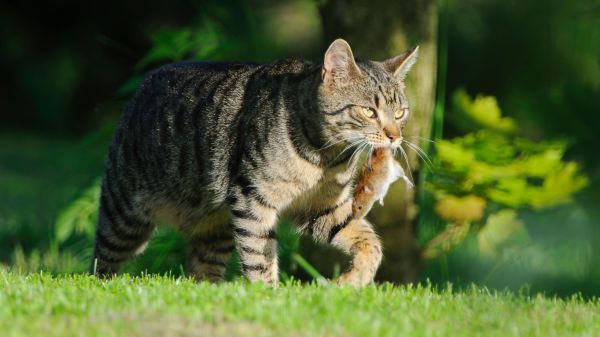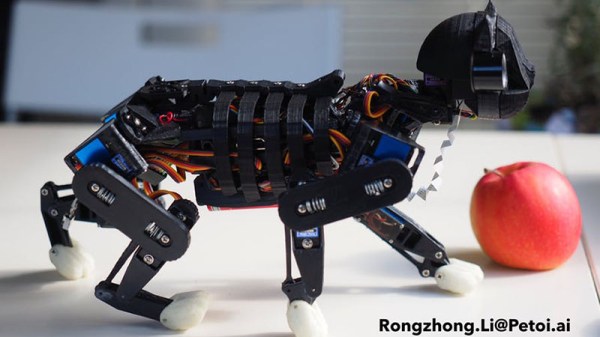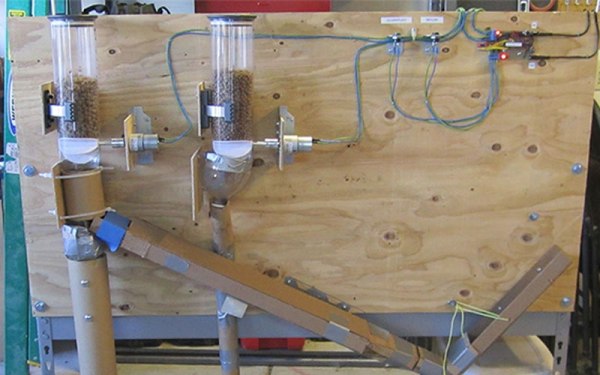Anyone with more than one cat can tell you that the joy mischief they bring into your life is much more than twice that of a single cat. And if those felines have different dietary needs, you can end up where [Benjamin Krejci] found himself, which resulted in this fancy RFID cat feeder.
For a little backstory, [Ben]’s furry friends [Luna] and [Fermi] have vastly different eating styles, with the former being a grazer and the latter more of a “disordered eater,” to put it politely. [Fermi] tends to eat until she vomits, which is fun, and muscles her pickier sister away from the bowl if there’s anything left in it. [Ben]’s idea was to leverage [Luna]’s existing RFID chip, which he figured would be a breeze. But the vet-inserted chip is designed to be read by a high-power reader directly in contact with the cat’s skin, which made reliably reading the chip a challenge.
Several round of design iteration resulted in the current configuration, with a large antenna coil poised above and behind the food dispenser. [Luna] has no choice but to put the back of her neck and shoulder blades almost directly in contact with the coil, which makes it easier to read the 134.2-kHz chip with a long-distance RFID module. If [Luna]’s chip is found, the lid on the food bowl opens gently and quietly, so as not to spook the mild-mannered cat. The lid stays open as long as [Luna] is in place thanks to some IR sensors, but as soon as she backs out, the lid comes down to keep [Fermi] from gorging herself.
Hats off to [Ben] for working through the problem and coming up with what looks like a fine solution. We suppose he could have tried something easier like weighing the two cats to distinguish between them, but this seems like a cleaner solution to us.


















